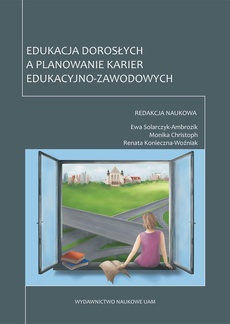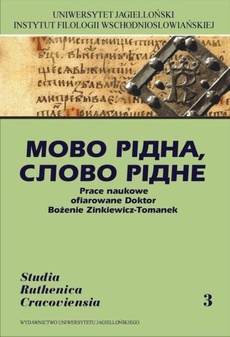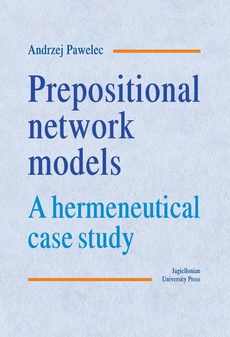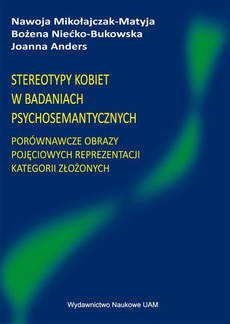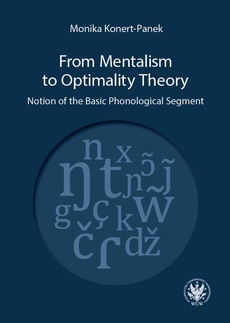INNE EBOOKI AUTORA
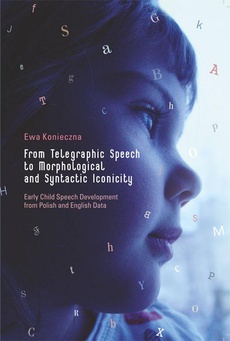
From Telegraphic Speech to Morphological and Syntactic Iconicity. Early Child Speech Development from Polish and English Data
Autor:
Format:
ibuk
The work of Dr Ewa Konieczna constitutes an important and valuable contribution to the studies of first language acquisition. Although intensive research in this field is being carried out in many countries and is concerned with data coming from a variety of languages, the work of Dr Konieczna – and this should be underlined – avoids overused topics and does not fall into the trap of easy imitation or eclecticism. Her work is original and highly innovative, as regards both the theoretical perspective and the extensive collection of linguistic data used in the study. Juxtaposition, on such a large scale, of specific utterances produced by Polish- and English-speaking children seems to have no precedence in
the literature of the subject.
From the review of Prof. dr hab. Bogdan Szymanek
| Rok wydania | 2014 |
|---|---|
| Liczba stron | 214 |
| Kategoria | Językoznawstwo |
| Wydawca | Wydawnictwo Uniwersytetu Rzeszowskiego |
| ISBN-13 | 978-83-7996-067-5 |
| Numer wydania | 1 |
| Język publikacji | angielski |
| Informacja o sprzedawcy | ePWN sp. z o.o. |
POLECAMY
Ciekawe propozycje
Spis treści
| Acknowledgements | 9 |
| Introduction | 10 |
| CHAPTER I. General overview of first language acquisition theories | 14 |
| Introduction | 14 |
| 1.1. Milestones in first language acquisition research | 15 |
| 1.1.1. Earliest records of first language acquisition | 15 |
| 1.1.2. Behaviourism | 15 |
| 1.1.3. Alternatives to behaviourism | 16 |
| 1.2. Chomsky’s Universal Grammar | 18 |
| 1.3. First grammatical analyses | 23 |
| 1.4. Theories stemming from the UG approach | 27 |
| 1.5. New developments | 30 |
| 1.5.1. Minimalism and functional categories | 30 |
| 1.5.2. Cognitive theories of first language acquisition | 32 |
| 1.5.3. Modern cognitive approaches to first language acquisition | 37 |
| Conclusion | 46 |
| CHAPTER II. Omission of content and function words | 47 |
| Introduction | 47 |
| 2.1. Language redundancy | 48 |
| 2.2. Definition of telegraphic speech | 52 |
| 2.3. Explanation of omissions | 54 |
| 2.3.1. Omission of functors | 55 |
| 2.3.2. Omission of contentives | 58 |
| 2.4. Ambiguity | 75 |
| 2.4.1. Ambiguity of telegraphic speech | 77 |
| 2.4.2. Ambiguity of sentences deprived of content words | 96 |
| 2.5. Semantic analysis of sentences devoid of content and function words in Polish and English | 112 |
| Conclusion | 117 |
| CHAPTER III. Morphological and syntactic iconicity in child language | 119 |
| Introduction | 119 |
| 3.1. Historical background | 120 |
| 3.1.1. Arbitrary and motivated signs | 121 |
| 3.1.2. Motivated and arbitrary signs in language | 123 |
| 3.2. Morphological iconicity | 127 |
| 3.2.1. Natural Morphology | 127 |
| 3.2.2. Morphological iconicity in the light of the theory of Natural Morphology | 131 |
| 3.2.3. Images in children’s language | 133 |
| 3.2.4. Inflectional diagrams in children’s language | 137 |
| 3.2.5. Derivationaliconicity | 164 |
| 3.3. Syntacticiconicity | 182 |
| 3.3.1. The principle of quantity | 182 |
| 3.3.2. The principle of sequentiality | 188 |
| 3.3.3. The principle of distance | 189 |
| Conclusion | 190 |
| Conclusions | 192 |
| References | 203 |

